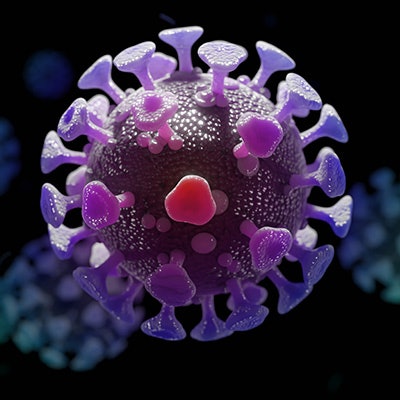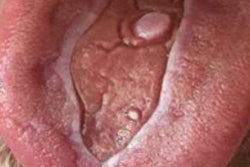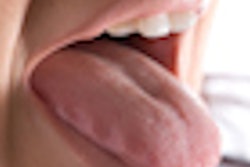
SARS-CoV-2 infection may be associated with geographic tongue (GT), which some patients are referring to as "COVID tongue," according to a letter to the editor published February 12 in the British Dental Journal.
Dental professionals should be aware of this possible link because it may be an indicator of infection with the novel coronavirus and patients may ask about it, according to the letter.
"If a GT is of recent onset, could it signify COVID-19? Possibly," wrote author, Dr. Russell Hathway, of the department of oral and maxillofacial surgery at Morriston Hospital in Swansea, U.K.
Evidence has shown associations between the SARS-CoV-2 virus and multiple oral manifestations, including mouth ulcers. In January, a Maryland dentist may have diagnosed the first asymptomatic cases of SARS-CoV-2 in two healthy teenage sisters when he discovered white oral lesions in their oral cavities and tongues.
Geographic tongue, also known as erythema migrans, presents as harmless red patches on top or the side of the tongue that may change size, location, and shape. The current study represents one of the first times that the condition has been noted as a possible sign of SARS-CoV-2.
The possible link between geographic tongue and SARS-CoV-2 was identified by patients who submitted symptom reports to the Zoe COVID-19 Symptom Study app, which was created by doctors and scientists at Massachusetts General Hospital, the Harvard T.H. Chan School of Public Health, King's College London, Stanford University School of Medicine, and the health science company Zoe. Multiple people reported symptoms of what seem to be geographic tongue, but only two communications and its relationship to COVID-19 have been written to date about it, Hathway wrote.
Though some members of the media have called for this tongue condition to be added to the list of COVID-19 symptoms, Hathway writes that should be done with caution. The diagnostic value of naming it a COVID-19 symptom is unknown, he noted.
However, it is important to remember that evidence suggests that erythema migrans may be linked with elevated levels of the inflammatory cytokine interleukin-6 (IL-6), which is upregulated in severe COVID-19. Furthermore, angiotensin-converting enzyme 2 (ACE2) receptor expression is higher in the tongue compared to other oral tissues, and the SARS-CoV-2 virus enters through ACE2 receptors, according to the letter.
Further research on the possible association should be conducted in the future, he wrote.
"But as media interest may generate some concern among our patients, we must keep abreast of these developments and remain vigilant," Hathway concluded.




















